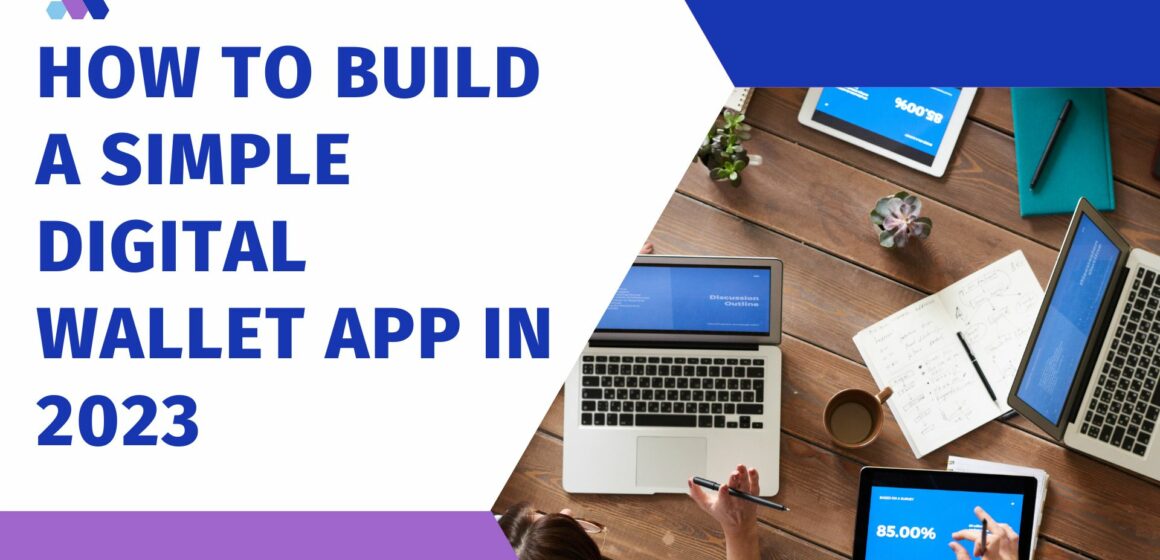A digital wallet app is what it is:
A digital wallet is a software, hardware, or online service that enables bank clients or companies to do transactions electronically. This software likewise stores customers’ payment information for various payment methods on many websites. E-wallets are another name for digital wallets.
Although historically, digital wallets were used on smartphones, they are now available in various formats, such as desktops. However, the e-wallet version that is most often used and most downloaded is the mobile app. In most circumstances, digital wallets are more user-friendly and convenient than traditional wallets and safer.
Also Read: 9-ways-how-digital-wallet-apps-can-boost-revenue
How Do Digital Wallets Operate?
To utilize e-wallets, users must first download the specialised apps created by banks or other reputable third parties. The following concepts form the foundation of an e-operation: wallet’s
- The e-wallet uses software to connect the vendor handling the transaction with your payment details from your connected bank account.
- Open wallets, which are approved by most businesses, enable online purchases, contactless in-store payments, and cashback. Different sorts of applications will provide various types of access.
- Certain transactions are available in semi-closed and closed wallets, but only with one particular retailer or with that specific retailer.
Cryptographic wallets vs. digital wallets
Crypto wallets are distinct from e-wallets, even though both have grown in popularity over the past few years. First, although they may also be used to store your fiat currency, crypto wallets are created specifically to enable transactions with cryptocurrency.
Cryptocurrencies cannot be used for payments or any other type of transaction in digital wallets because they are only intended for fiat money. Crypto wallets securely and conveniently store the passwords that provide access to your cryptocurrency.
Digital wallet types
There are now three primary categories of digital wallets, which are outlined below:
Close Wallet
A business that offers goods or services can think about developing an electronic wallet app called a closed wallet. Customers who utilize this wallet can conduct transactions with their sole issuer using the funds they have on hand. The wallets also serve as a place to store money from returns, cancellations, and refunds. Amazon Pay is an excellent real-world illustration of a closed wallet.
Wallet With A Half-Close
Customers can conduct transactions at the listed merchants and places using a semi-closed wallet type. Although this form of wallet’s coverage region is constrained, it can be used to make online and offline purchases. To easily and legally accept payments using mobile wallets, retailers must get into a contract with the issuers.
Open Wallet
Open wallets are made available by banks or reliable third parties who work with banks. Along with withdrawing money from banks and ATMs and transferring money, users who have open wallets can utilize them to do all transactions permitted with a semi-closed wallet.
Top Digital Wallet App Features
Features that Peer to Peer payment software must have (illustrative). These applications can be scaled up based on corporate requirements and consumer demand.
- sending a bill
- Transaction history Unique ID/ OTP records
- Send money to the bank.
- Lock with a fingerprint sensor
- Buy and trade cryptocurrencies.
- Registration/Login
- User identification
- Digital wallets are being added.
- Alert Notifications
- recording transaction history
- integrating bank accounts
- UPI for connecting a mobile number to a bank account
- deciding on the payment options
- Choosing the business/bill payment and merchant choices
- Rewards, deals, coupons, and referrals
- adding chatbots and virtual helpers where appropriate
- virtual wallet for credit cards
- easy-to-use dashboard
- Conversions of exchange rates
- Text Message Alerts
- Currency Conversion And Transfer From Crypto To Fiat
- Blockchain Feature Addition
- We are increasing the number of security features, such as App Security, Two-factor authentication, and Instant notifications. Observe the rules.
- Make Purchases and Payments
- Payment Transfers
- Encrypting Share Payments Data
- Request for Payment at the POS (point of sale)
- PIN
- Account preferences
- Divided bills
- Tickets sent electronically
- Facebook feed
- Facebook and phone contacts sync
Top Trends for Digital Wallets in 2023
- Wallets Powered By AI
- Wallets for cryptocurrencies
- With NFC, wallets
- Bitcoin Wallets
- Intelligent voice wallets
- Online Cards
- Foreign Transfers
Steps in e-Wallet App Development
1. Market Research
Any successful app needs market research and competitor analysis. This stage is crucial because you must choose the industry, and target audience, analyze competitors, and determine what the audience wants and how you may thrive.
2. Final App Concept
The next step is to build and finish the app concept after market research. This will help you meet your goals and aid the development company’s business analysis and estimation.
3. App developer choice
If you don’t have an in-house staff, employ a crypto app developer. Consider these factors while picking a developer:
Try Clutch, ITFirms, Manifest, etc.
View portfolio and reviews
Interview companies
Ask about specialization
4. UI/UX
The app’s design affects the product’s first impression; how people like it will determine if they use it. The design team must have a specific background to make the interface entertaining and suitable for e-wallets.
5. Dev
When the design team offers wireframes and mockups, the development team turns them into a working app and adds features. We recommend using Agile to design an app since it allows you to join the market rapidly and reduces mistakes.
6. App launch & promo
Once you launch the app, you’ll need to market it. However, it’s ideal to create a marketing plan early in the development process and adapting it based on the final product. It would help if you used different channels and tactics to stand out with your app.
7. Ongoing development and support
Development continues after launch. When early users give input, make modifications. Collecting feedback lets, you see what users like and don’t like and make changes. Always upgrade your app when new technology or trends occur.
The Best Digital Wallets: How Do They Earn Money?
Users’ login information for credit cards, debit cards, and online banking are stored in digital wallets—request confirmation from the bank to connect a mobile number to a bank account. The user only needs to unlock the app, scan it, and make a payment whenever they want. The user will no longer need to enter their bank account or credit card information each time they need to make a payment.
How Much Should a Digital Wallet App Cost to Develop?
An entry-level to advanced P2P wallet app will cost around $100k–$150k (for the feature set specified above). We can adjust to your needs, and the app will be expandable to handle future requirements.
Important Lessons: Are Digital Wallet Apps Useful?
It is less necessary for people to use their traditional wallets or to remember their debit/credit card passwords for each transaction when there is an NFC or P2P wallet app available. Additionally, P2P Foreign Currency (P2P FX) enables savings of up to 90% of transactional intermediary fees on foreign exchange and transfer fees. International remittances are more affordable thanks to peer-to-peer cross-border money transfer applications. NFC for cross-border money transmission lowers the cost of international remittances. Similar to banks, certain digital payment applications provide microloans with lower interest rates. Please send us a message to learn more about how we combine the greatest on-demand services with Digital Wallet App Development to give you an edge. These safe transactions offer convenience and security at the same time.
Support Zerocrypted
- Trade on Bitmex
- Trade on Binance Jersey
Subscribe to our Newsletter to be a part of our future $1,000 per month contests.


